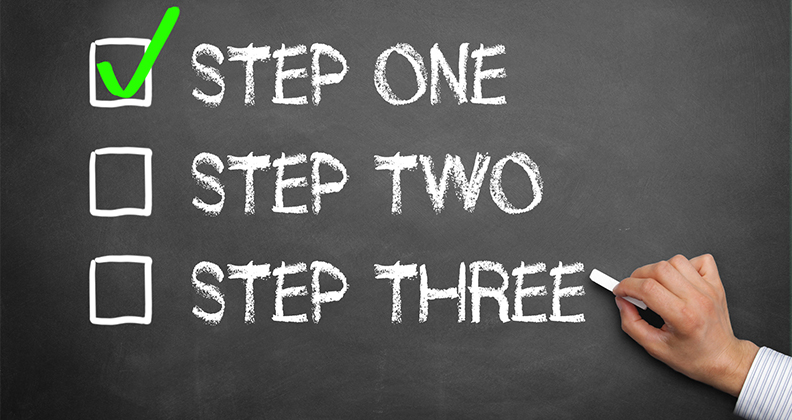
“What should I do next?” is a daunting question as we face multiple-high priority deadlines. No matter that we’ve had management tell us that everything is a priority; the reality is that we must choose which improvements and projects to tackle first. Thus, we all need a strategy to triage our projects. With that in mind, here are eight tips and techniques that have worked well for me.
1. Develop criteria by which to make priorities for your projects.
Challenge: It’s easy to have a pet project—that one you really enjoy and feel enthused to work on, but it’s unlikely that project is also the most important one for you to work on right now. Borrowing from my regulatory affairs background, you need to avoid bias in your decision-making progress. To avoid bias in choosing subjects for a clinical trial or a literature review, we develop what is called a protocol. This document is written in advance and determines all of the objective criteria by which subjects or journal articles will be included in the study. For design improvements, as an example, your criteria might look like: customer delivery promises, sales goals, lead times and deadlines for others (depending on your deliverable), lead times for delivery of components or manufacturing processes that you need to incorporate, or an upcoming event or trade show deadline.
Solution: What is on your list depends wholly upon your projects. The key takeaway is that you need to develop a set of criteria for yourself that dictates what’s truly important or time sensitive. There are likely multiple, competing criteria, so you’ll need input from stakeholders on what should be in your triaging criteria.
2. Acknowledge the fact that you can’t do it all.
Challenge: Everyone is chronically busy these days. Often, the temptation is to make a special push to get through the massive pile of tasks at hand, and then take a break later. Sorry, but there will never be a later when things are quieter and more manageable. Your plate is always going to be full—no amount of overtime is going to stop your inbox from overflowing the very next day.
Solution: Come to terms with your reality—life rarely slows down. Choices have to made, and understand that all you can do is your best.
3. Maintain an appropriate work/life balance today, not tomorrow.
Challenge: Contrary to what you may believe, you can’t get rested up on a one- or two-week vacation. Are you constantly working at a high speed throughout the day and continuing to do so each night and weekend? Are you doing so without spending time on a regular basis with friends and family? If you answered yes to both, you’re likely to find that your productivity decreases.
Solution: As many wise people have said, life is a marathon, not a sprint. Thus, focus on being exceptionally productive in eight hours rather than moderately productive in ten or twelve. It’s wise to use that extra time at the end of the day to go home and be with your family, or to enjoy a favorite activity with friends.
4. Avoid the dreaded “time wasters.”
Challenge: How many of you, like me, read your email several times a day and consider it a “break” from working? It is not a break that refreshes you. It is actually just a break in your focus that will suck much more time from your day than the length of the “break” itself. Every time you stop what you’re working on to read an email, respond to a chat message, read a text or even talk to a coworker, I’ll bet the next thing you say to yourself is, “Now where was I?” For me, regrouping my thoughts and getting back on task takes at least 15 minutes. Therefore, if interruptions (whether self-inflicted or brought on by others) occur every 30 minutes, the amount of time I’m actually making progress on a design is minimal.
Solution: Make the vow today to set aside a reasonable block of time in the morning when you start your day, and the evening when you end your day, to check messages. Also, hang a sign on your cubicle (or office door, if you’re that fortunate) that instructs people not to interrupt you unless it’s urgent.
5. Create “themes” for your day.
Challenge: For years, I was a “to do list” planner. I would block off chunks of time on my calendar and decide what I would accomplish in each block. The problem with that was a) it made everything feel like a chore, even things I would normally enjoy like a design challenge or a walk; b) I chronically underestimated how much time would be needed, so I’d be behind schedule and feeling defeated by mid-afternoon; and c) I knew it wasn’t “real,” so if I cheated on my self-imposed schedule, it didn’t matter. In short, it never worked. There’s a better way: themes.
Solution: Instead of rigid blocks of time, set a list of themes for your day—things you’d like to work on, not finish, just make progress towards completing. Anything that isn’t work, such as going for a jog, does not go on the list. That way, it remains a fun way to treat yourself.
6. Always work on the bigger, longer term projects first.
Challenge: It is incredibly easy to get into the mode of putting out fires. These quick, urgent problems are fun to solve, because you get immediate gratification. Unfortunately, they can quickly and easily consume your entire day, and leave you feeling pressured to work late in order to accomplish the more important projects. For example, if I have three months to complete a project, it’s tempting to put it off for a while. Why not? You can make up that time with a dedicated push later. This thought process can be problematic for several reasons. First, projects almost always take longer than anticipated. Second, we don’t know what other projects, illnesses or emergencies are going to crop up at work or in our personal lives in the interim that use up all of our time. Finally, when we do projects in a hurry, mistakes are made or we don’t have time to explore other options that might achieve better results.
Solution: Things are quietest and most controllable first thing in the morning. Each day, set aside time early in the morning to work on your most important, large projects to avoid a last minute crisis of trying to get it done under the wire.
7. When there are too many large, important projects, choose one at a time.
Challenge: No matter how efficient you are, you cannot focus on numerous projects all at once. A friend of mine once told me I reached my “contact relay threshold” and could no longer do anything at all. He was referring to old fashioned mechanical relay switches that had to be physically turned from on to off position. They had a maximum speed at which they could be switched, and if all of them are being constantly turned to the opposite state, there’s nothing else going on. In other words, no data is actually being transmitted. You need to turn one switch on and leave it on for a long enough duration to make satisfactory progress.
Solution: Choose a “project of the day” and focus on just that project, for a chunk of time. The next day, or the same day in the afternoon if necessary, focus on a different project.
8. Communicate
Challenge: More than anything else, let others know what you’re doing and how you’re progressing. When colleagues and management understand your workload and get regular updates, they’re much less likely to pressure you, and they’ll feel less stressed. The most effective way to keep people informed is a weekly memo. This is easy to accomplish via an email to all stakeholders of your time, in other words anyone waiting or depending on you directly. I usually choose Friday, and my memo (per project) always has the same three sections: 1) What I intended to accomplish this week; 2) What I actually accomplished this week (and why) and 3) What I seek to accomplish next week. If there are things I’m waiting on or questions for which I need answers, I list the steps I’ve taken to get those. If I need help with anything, I clearly state what I need and ask for the appropriate person to confirm that they understand and can help me. If your workplace has regular weekly meetings for projects, prepare a memo to distribute at those—not just a verbal update. Everyone is busy, so requests are quickly forgotten as soon as people leave the room.
Solution: Your projects are not just about you. They involve many stakeholders, and task accomplishment is often dependent upon other people and events, so keep everyone informed, in writing, of where you stand.
In conclusion, which one of these do you feel you need to work on most? For me, it’s definitely number 4, the “time wasters.” I’m addicted to human interaction, which makes me a prolific emailer, social media user and people magnet. None of us is perfect, nor should we strive to be, but we can all strive to improve both personally and professionally.
Dr. Deborah Munro is the President of Munro Medical, a biomedical research and consulting firm in Portland, Oregon. She has worked in the orthopaedic medical device field for almost 20 years and holds numerous patents, mostly in the area of spinal fusion. She taught mechanical and biomedical engineering at the University of Portland for eight years, where she also founded a Master’s in Biomedical Engineering program. Her current interests include developing new medical device solutions for companies and assisting them in their regulatory compliance efforts. She can be reached by email.




